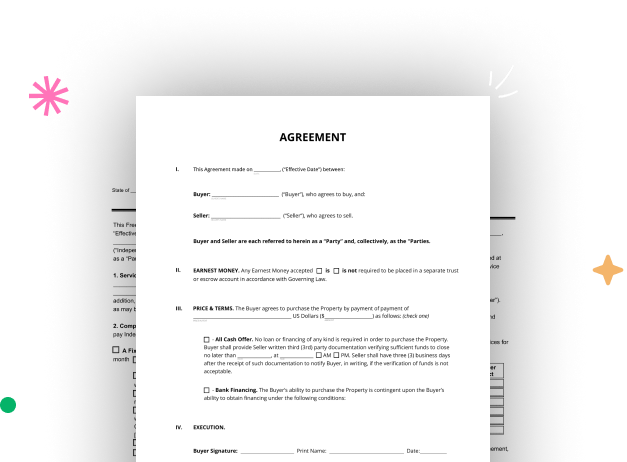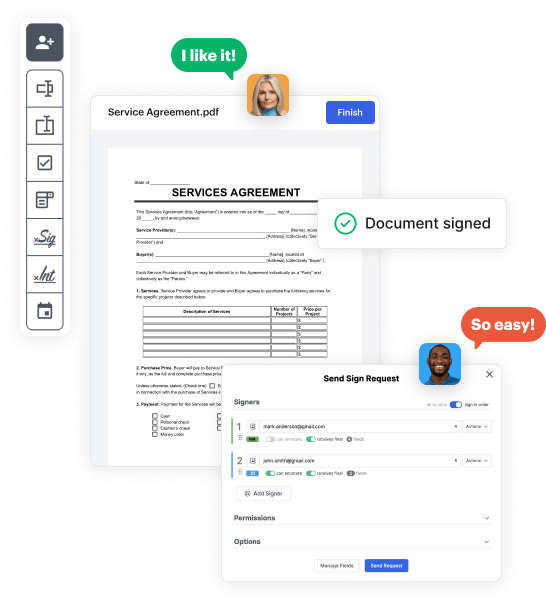

Begin by signing up for a free DocHub account using any offered sign-up method. If you already have one, simply log in.
Try out the entire collection of DocHub's pro tools by registering for a free 30-day trial of the Pro plan and proceed to build your Maryland Residential Lease.
In your dashboard, click the New Document button > scroll down and choose to Create Blank Document. You will be taken to the editor.
Use the Page Controls icon marked by the arrow to switch between two page views and layouts for more flexibility.
Explore the top toolbar to place document fields. Add and configure text boxes, the signature block (if applicable), insert images, etc.
Arrange the fields you added per your chosen layout. Customize the size, font, and alignment to ensure the form is user-friendly and neat-looking.
Save the completed copy in DocHub or in platforms like Google Drive or Dropbox, or create a new Maryland Residential Lease. Send out your form via email or use a public link to reach more people.